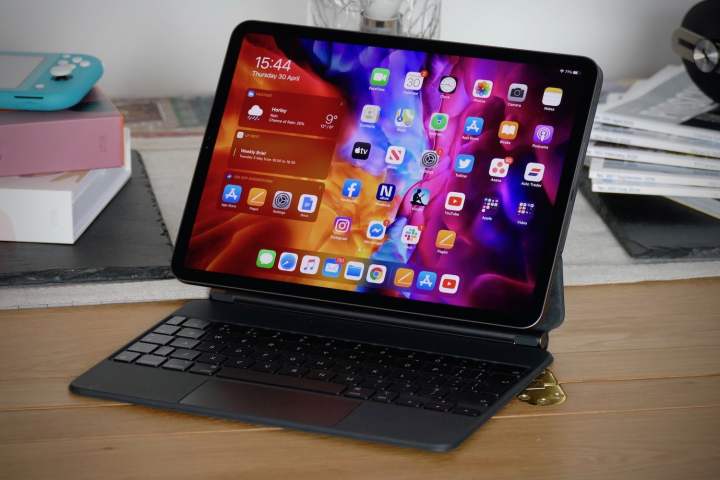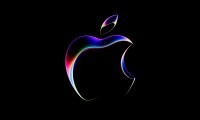Apple’s Worldwide Developers Conference (WWDC) is one of the company’s biggest press events of the year. Whether it’s new products or sneak peeks of Apple’s upcoming software features, you can always expect something exciting to be announced.
The keynote starts at 10 a.m. PT today, June 22, where CEO Tim Cook will address his online audience directly from Apple Park in Cupertino, California.
A new format
This year’s WWDC will be unlike any other. With its physical, in-person event canceled, the conference will now have a completely online-only format. Alongside the keynote on Monday, June 22, Apple will also host its annual “Platforms State of the Union” later in the day at 2 p.m. PT.
While most people aren’t interested in much beyond the keynote, that’s only the beginning of the event for developers, who are the target audience of the conference. To replace the invaluable face time developers usually get with Apple’s engineers, the company is hosting developer labs by appointment throughout the week, as well as over a hundred engineering video sessions.
iOS 14 and iPadOS 14

The headlining announcement of WWDC is always the next version of the iPhone operating system. Last year that was iOS 13, which brought Dark Mode, new features for HomeKit (including secure video), and improved messaging, as well as updates to voice control, Face Time, and privacy. This year, we’re expecting a preview of iOS 14, as well as an update to iPadOS, which runs on a similar operating system.
The biggest rumored change to iOS 14 is a page where you can see a full list of your installed apps. This list of apps is said to provide smart suggestions from Siri depending on context, as well as filters for quickly finding apps. Speaking of the home page, an iPad-like widget system is also rumored to finally come to the iPhone. Leaker L0vetodream has also backed up this prediction.
In fact, L0vetodream claimed a few more new features were coming to iOS in a series of last-minute predictions. The Twitter leaker asserted Apple will redesign the iOS home screen, change the alignment of apps, add “more app clips,” and would stop incoming calls automatically going full screen. As well as that, L0vetodream predicted there will be no change to the naming convention of iOS. This comes after another leaker, Jon Prosser, posted a cryptic tweet reading simply “iPhone OS,” leading some to conclude Apple would adopt this naming style for its cell phone operating system.
We’re also expecting iOS 14 to receive the new cursor and trackpad support that came to the new iPad Pro and Magic Keyboard.
There have been a number of other iOS 14 rumors, including the ability to record phone calls, a pack of new third-party default wallpapers, and a bevy of new HomeKit features. Specific apps like iMessage may be updated with a host of new features, including the ability to unsend messages, tag people in a conversation, set wallpapers for group chats, and more.

As for iPadOS, we expect Apple to talk more about its new cursor support, as well as its lidar laser scanner. That’s a feature of the new iPad Pros, but expect Apple to spend some more time explaining just how the feature might be used in new apps. There’s also a rumor that widgets will now be integrated into the rows of icons on the home screen, rather than relegated to the sidebar.
L0vetodream has also chimed in on iPadOS updates. The leaker claimed the iPad operating system would come with redesigned Sidecar functionality — Apple’s feature that allows an iPad to be used as a second screen for a Mac. As well as that, we may see “enhanced handwritten input,” according to L0vetodream.
While these software updates are typically announced in June, their final release will not be until new devices launch in the fall.
A transition from Intel processors to ARM?

All the event photos have included some kind of Mac imagery, so we expect Apple to shine the spotlight on its most ignored platform this year. Recent rumors point to the possibility of a massive transition happening under the hood — moving from Intel chips to ARM. Apple has used Intel processors in its Macs for the past 15 years, and a switch to ARM would be a significant deviation from that trend.
Apple has used ARM-based processors in its iPhones and iPads (known as Apple’s A-series chips), and now Apple is rumored to announce that future Macs will follow suit. Switching to ARM requires a massive change in system architecture, affecting what applications can run on these future computers. Apple has been hard at work with its Mac Catalyst program, helping iPad developers bring their apps to the Mac. Expect some updates on how successful this program has been, along with the introduction of new features or tools to encourage more participation.
While the transition to ARM may be announced at WWDC, don’t expect the first ARM-based Macs to launch for a while. Apple just updated its line of MacBooks, and it seems highly unlikely the first ARM Macs will launch until 2021. Apple needs a long runway to make sure the developer support is in place to make for a seamless transition. Just ask Microsoft; it has tried, and failed, to introduce successful ARM-based devices like the Surface Pro X.
Apple will likely also touch on the new version of MacOS. While rumors have been very light on this front, a late flurry of predictions from L0vetodream has shed some light on what we might see. The leaker put forward a name for the operating system — MacOS Big Sur. This sticks with Apple’s recent trend of naming MacOS after California landmarks, and breaks from a (somewhat unlikely) prediction that Apple would use the name MacOS 16.
What about MacOS features? L0vetodream has claimed Apple will bring a “huge update” to Safari, as well as a redesigned user interface.
New iMac?

There’s more to WWDC than just software. Last year, Apple announced the Mac Pro, and this year it’s rumored to follow it up with a redesign of the iMac. It’s been many, many years since the design of the iMac was updated. It’s still sporting some hefty bezels, some older components, and older peripherals. We’re expecting to see thinner bezels and larger screens, sharing the “design language of the iPad Pro” according to one leak.
There’s also the possibility that Face ID will arrive on the Mac, hinted at by the Memojis pictured in the event photos. The security feature has been on iPhones for years, but has still not come to the Mac platform. In fact, iMacs still do not even support Touch ID, since the Magic Keyboard doesn’t include one.
We don’t know how comprehensive this redesigned iMac roll-out will be, but the current iMac starts at $1,099 for the 21.5-inch model. This model still uses a dual-core processor and a mechanical hard drive.
However, it could be that we actually see no new hardware at all. Two prominent Twitter leakers — Jon Prosser and L0vetodream — have both claimed that the event will be a software-only affair. Prosser’s claim contained a good deal of uncertainty, however, and he admitted he could be wrong on this point.
watchOS 7
Did I just find a mention of the unannounced Sleep app for the Apple Watch? 🤔 https://t.co/J41JlCIyPI pic.twitter.com/4gor3I8AuL
— Daniel Marcinkowski (@dmarcinkowski_) October 7, 2019
WatchOS 7 will be the next version of the Apple Watch operating system, and we expect Apple to announce a number of new features. Sleep tracking has been rumored for years, but in watchOS 7, it may finally come to fruition. The dedicated new “Sleep” app was first noticed in an App Store listing in 2019, and that’s since been followed up with mentions of it in iOS code. This app would use various sensors in the Apple Watch to track sleep habits and offer recommendations to improve the quality of sleep.
“Kids mode” is another significant rumored feature, which makes it easier for a parent to control limitations and restrictions on a kid’s Apple Watch. It’s rumored that a “SchoolTime” mode is in the works, along with revamped rings in the health app tailored toward kids.
There are plenty of other rumored features that could come to watchOS 7, including blood oxygen monitoring, “hand wash monitoring,” and, of course, new watch faces. According to L0vetodream, we could also see a redesigned home screen, although it is not clear whether this means the app view or simply new watch faces. There’s even a rumored watchOS 7 that will have some mental health capabilities, such as warning the user of panic attacks.
tvOS

Apple TV still isn’t a headline product for Apple, but you can still expect some slight tweaks to the latest model of the operating system, tvOS 14.
A 6th-generation Apple TV is also rumored to be in the works, set to launch with the A12X chip inside, 8GB of RAM, and 128GB of storage. There’s even rumor of a new remote that was discovered in iOS 14 code, though there’s no indication how it differs or when it’ll be released.
On the software side, L0vetodream believes the next version of watchOS will be able to control HomeKit devices, perhaps using an on-screen control panel much like the Home device on iOS.
Other products
There are a number of smaller rumored products that could make an appearance. For example, a product called AirTags was rumored to be launched this Spring, but they never came. These are Tile-like Bluetooth trackers that could help you find lost items, perhaps using augmented reality on your iPhone.
We were also expecting some new over-ear headphones, called either StudioPods or AirPods Studio. They were supposedly set for release in spring, but Apple may have decided to hold them until WWDC.
If Jon Prosser and L0vetodream are correct, however, these may not make an appearance at WWDC after all.



